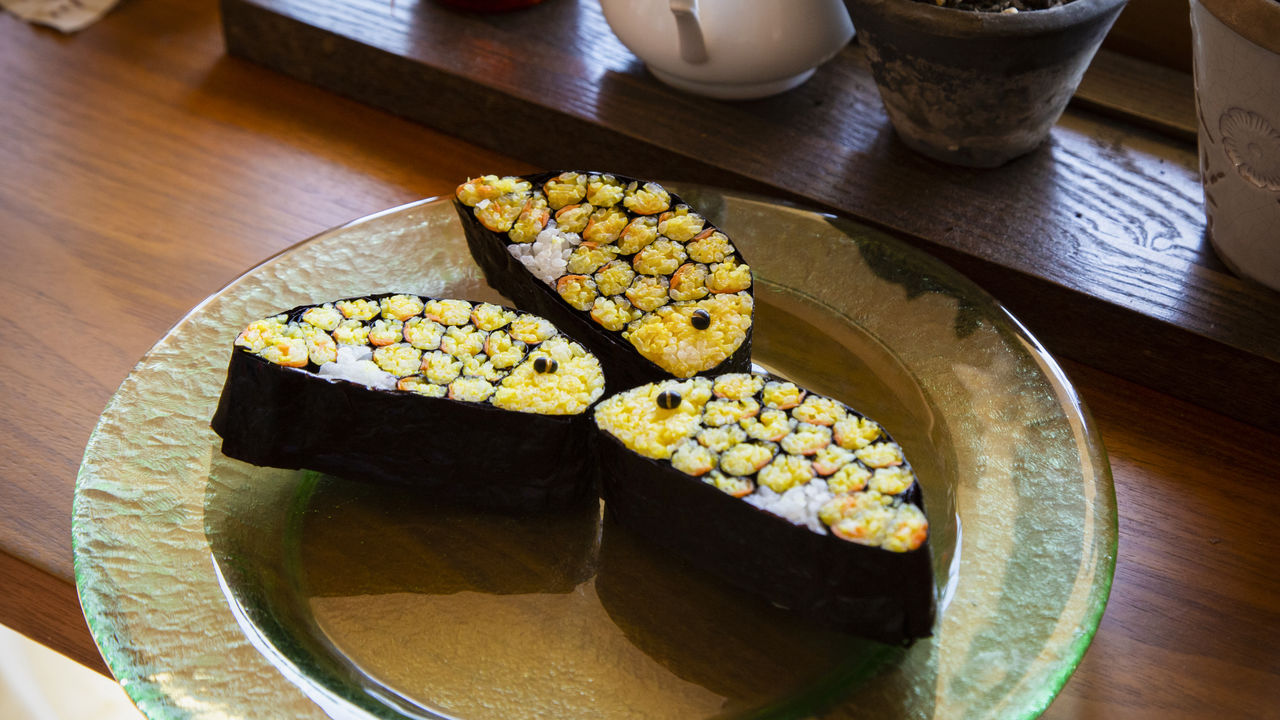
The Art of “Kazari Makizushi”: Sushi Rolls in the Shape of Fish
JapanIn video
Guide to Japan Food and Drink- English
- 日本語
- 简体字
- 繁體字
- Français
- Español
- العربية
- Русский
UNESCO added traditional Japanese cuisine to its Intangible Cultural Heritage list in December 2013. This cuisine has also been winning global recognition as low-calorie health food, though, not just as a culturally important tradition. And sushi, always popular among the Japanese, has won fans around the world.
For most people, sushi brings to mind a bite-size mound of rice (shari) topped by a slice of sashimi or some other ingredient (neta). Makizushi, a type of sushi roll wrapped in nori (dried seaweed), is said to have been first introduced in the Kansai region in the Edo period (1603–1868), after which it quickly spread throughout the country. It is a much more versatile form of sushi. Ingredients can be varied and differ from region to region—or simply depending on what is available in the refrigerator. A popular variation these days is kazari makizushi, sushi rolls formed so that the cross-section of the roll reveals delightful patterns of flowers and animals. These colorful mouthfuls are the perfect subjects for an Instagram posting.
We asked Yahata Meiko, a first-class kazari makizushi expert licensed by the Japan Sushi Instructors Association, to show us how to make kazari makizushi.
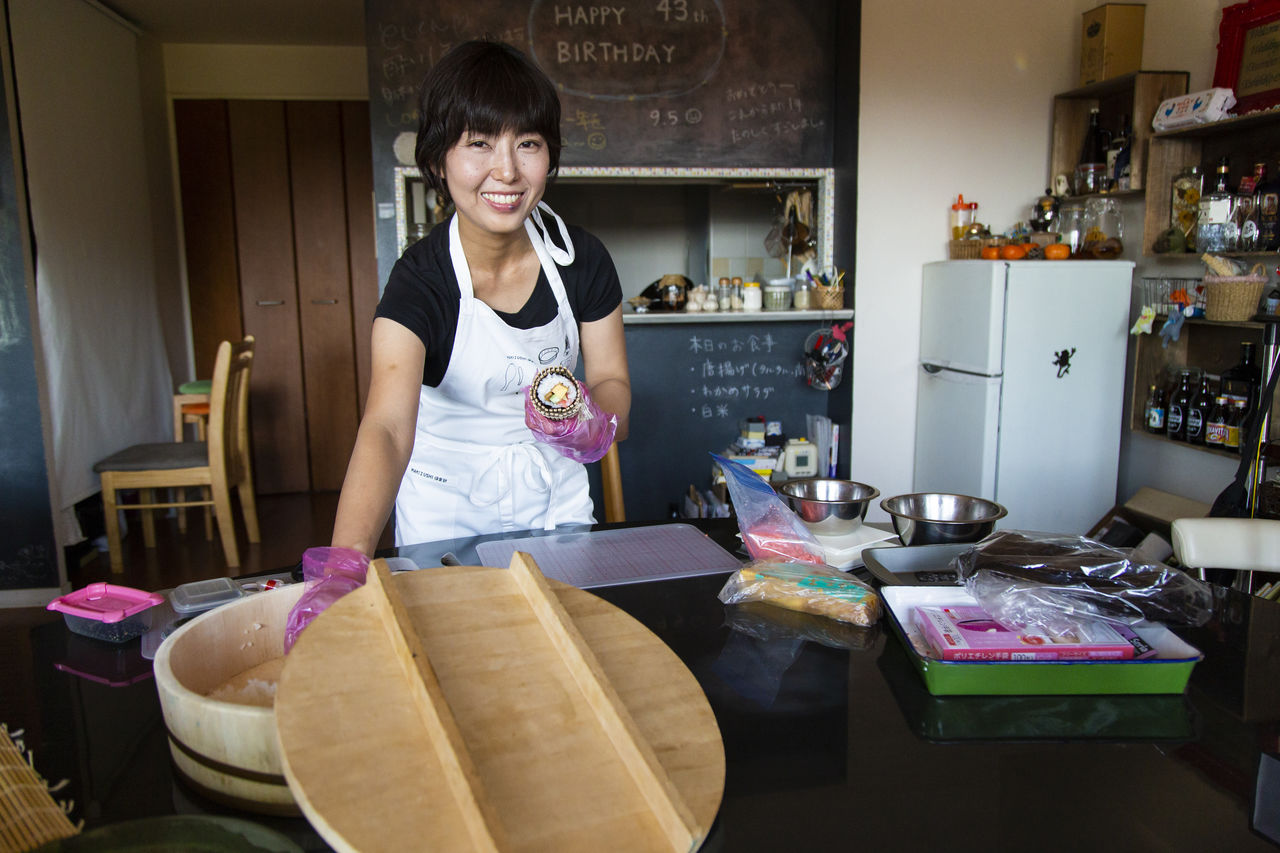 Makizushi Ambassador Yahata Meiko demonstrates how to make kazari makizushi.
Makizushi Ambassador Yahata Meiko demonstrates how to make kazari makizushi.
Rolls Within Rolls
A basic makizushi is made by spreading vinegared sushi rice on a sheet of nori, adding various ingredients, and rolling the whole into a cylinder shape using a bamboo mat called a makisu. Kazari makizushi is essentially a large roll containing a number of smaller rolls of carefully selected ingredients—and sometimes colored rice—strategically placed so that when the roll is formed and cut, the cross-section will have the desired pattern.
To make a kazari makizushi in the shape of a fish, you must first prepare the separate parts: a triangular makizushi for the head, a number of thin makizushi for the scales, and flattened pieces of makizushi for the tail. Here, the rice has been colored yellow with turmeric, a spice often used in curry. The smaller makizushi are laid out on a large sheet of nori that will serve to outline the fish shape. The pieces must be carefully placed while visualizing how they will combine to create a fish. Open spaces are filled with white sushi rice and then the pieces are all rolled together with a makisu.
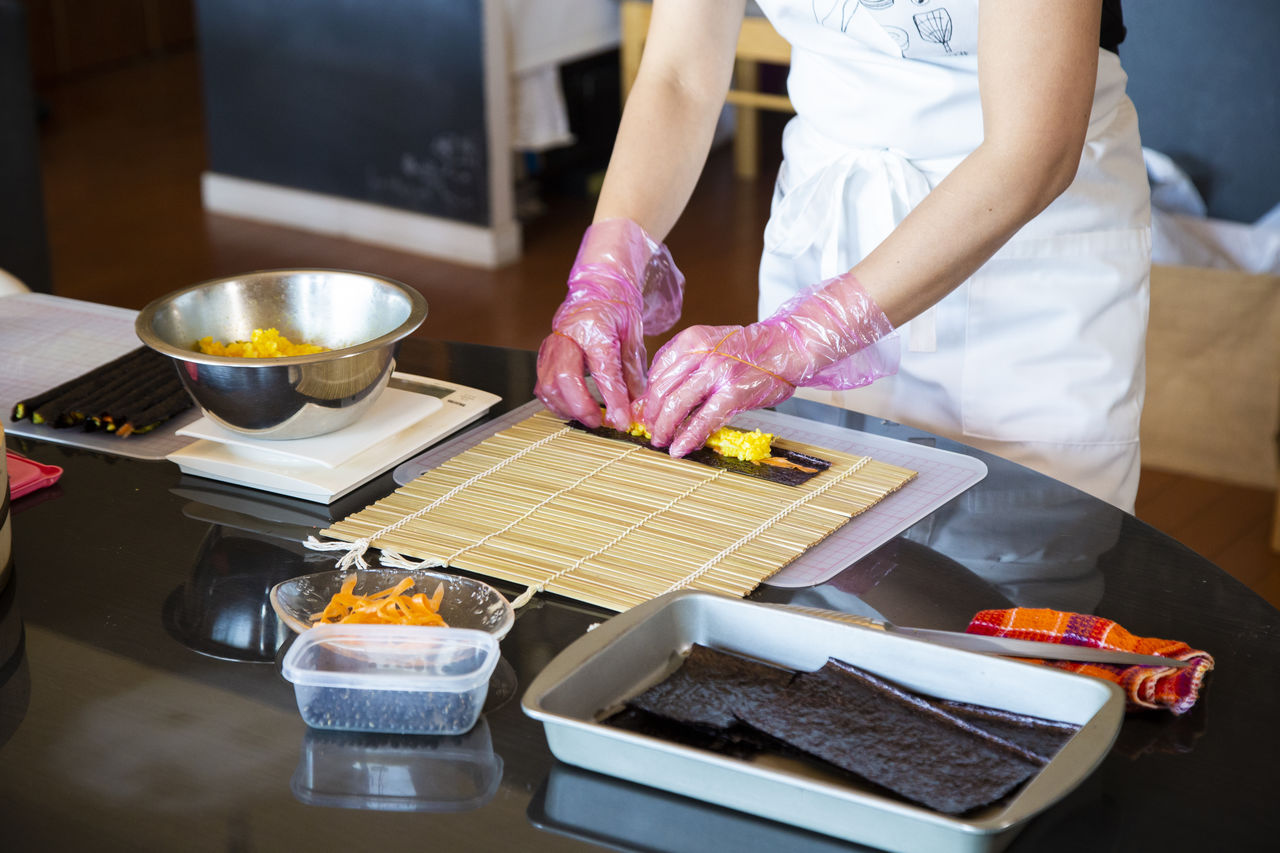 Start by making a lot of small rolls that will appear as the fish scales.
Start by making a lot of small rolls that will appear as the fish scales.
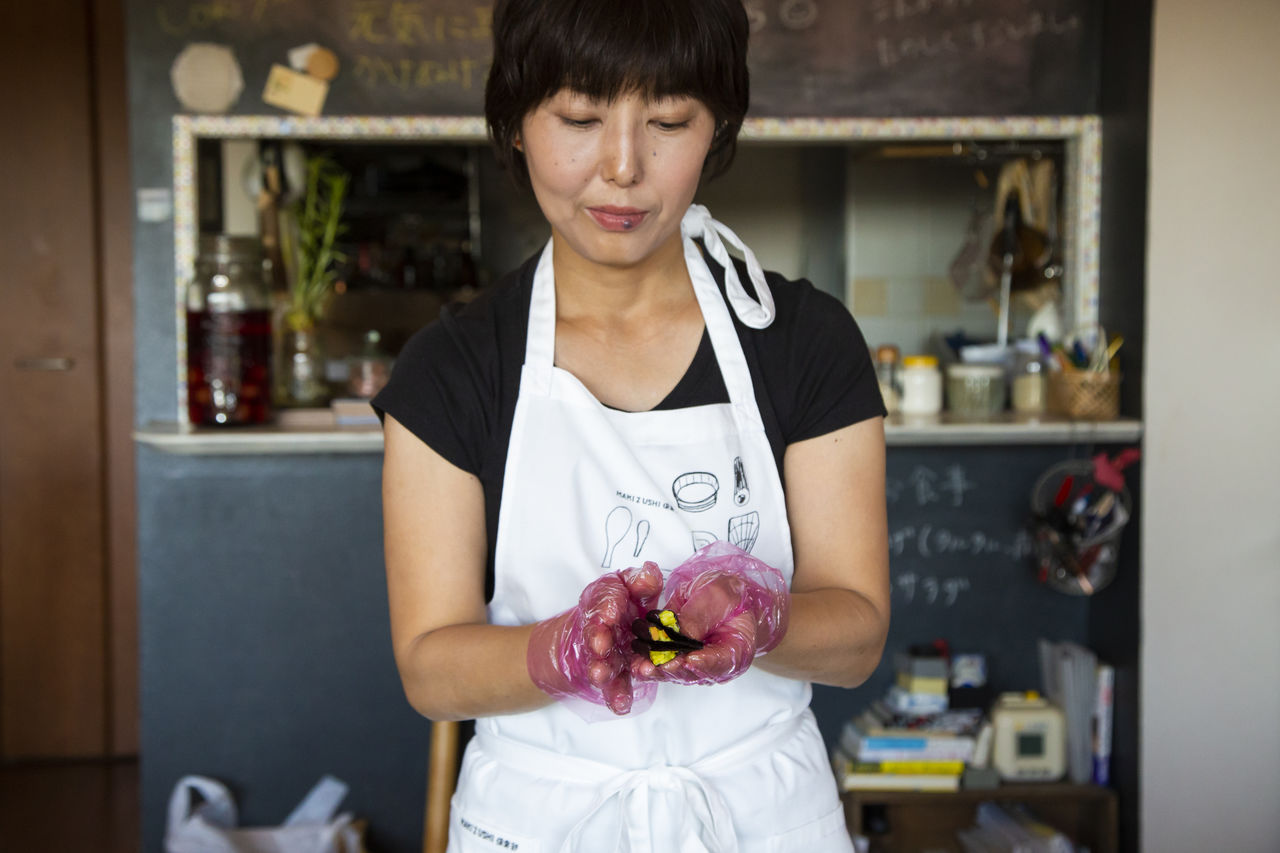 Combine three flat makizushi pieces to form the fish tail.
Combine three flat makizushi pieces to form the fish tail.
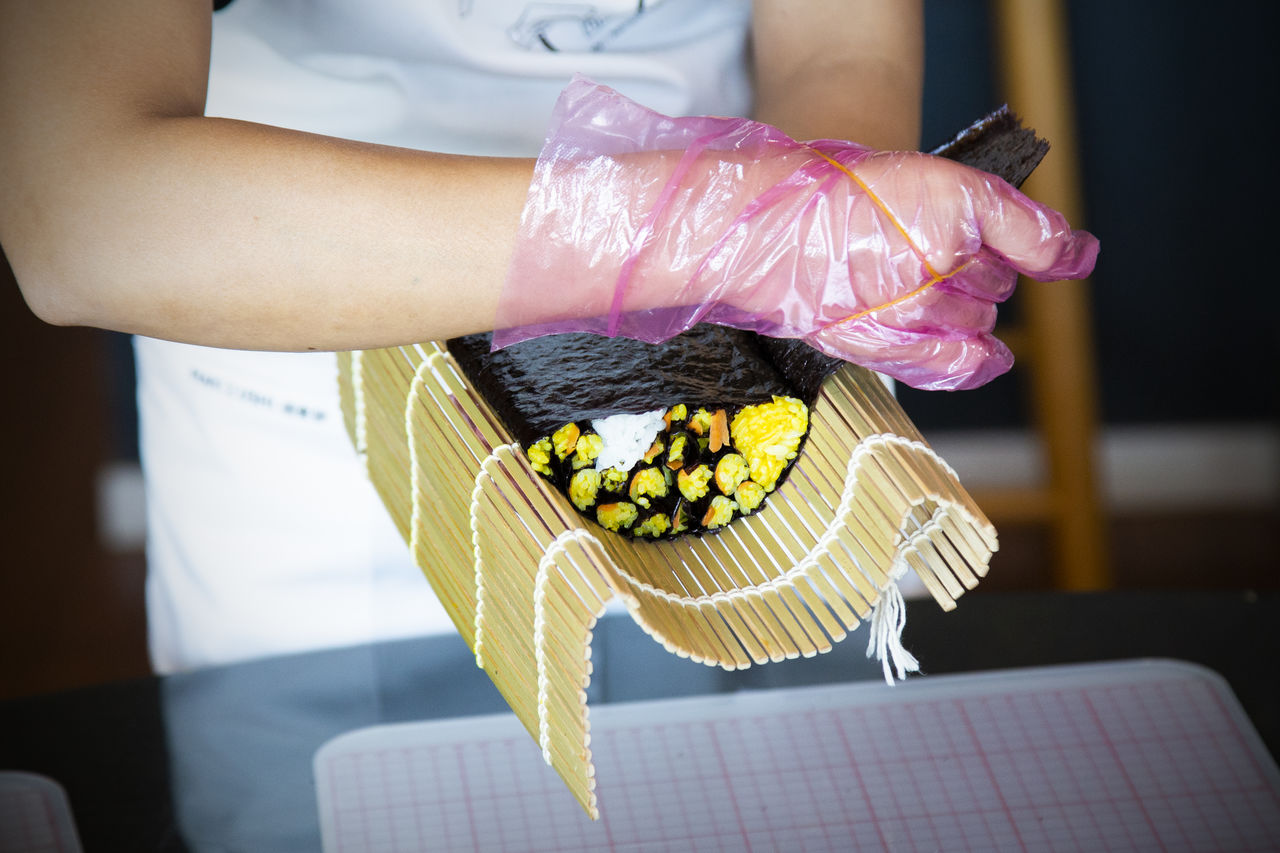 On a large piece of nori, lay out the triangular piece that forms the head, the fish scale rolls to form the body, and the three flat pieces for the tail. Fill in the open space with white sushi rice and carefully press into a semicircular shape.
On a large piece of nori, lay out the triangular piece that forms the head, the fish scale rolls to form the body, and the three flat pieces for the tail. Fill in the open space with white sushi rice and carefully press into a semicircular shape.
Cutting the makizushi to reveal the cross-section pattern is always an exciting moment. The yellow fish are brought to life by adding black beans for their eyes and placing them on a sea-blue plate. Here roasted kuro-sengoku soybeans have been used for the eyes.
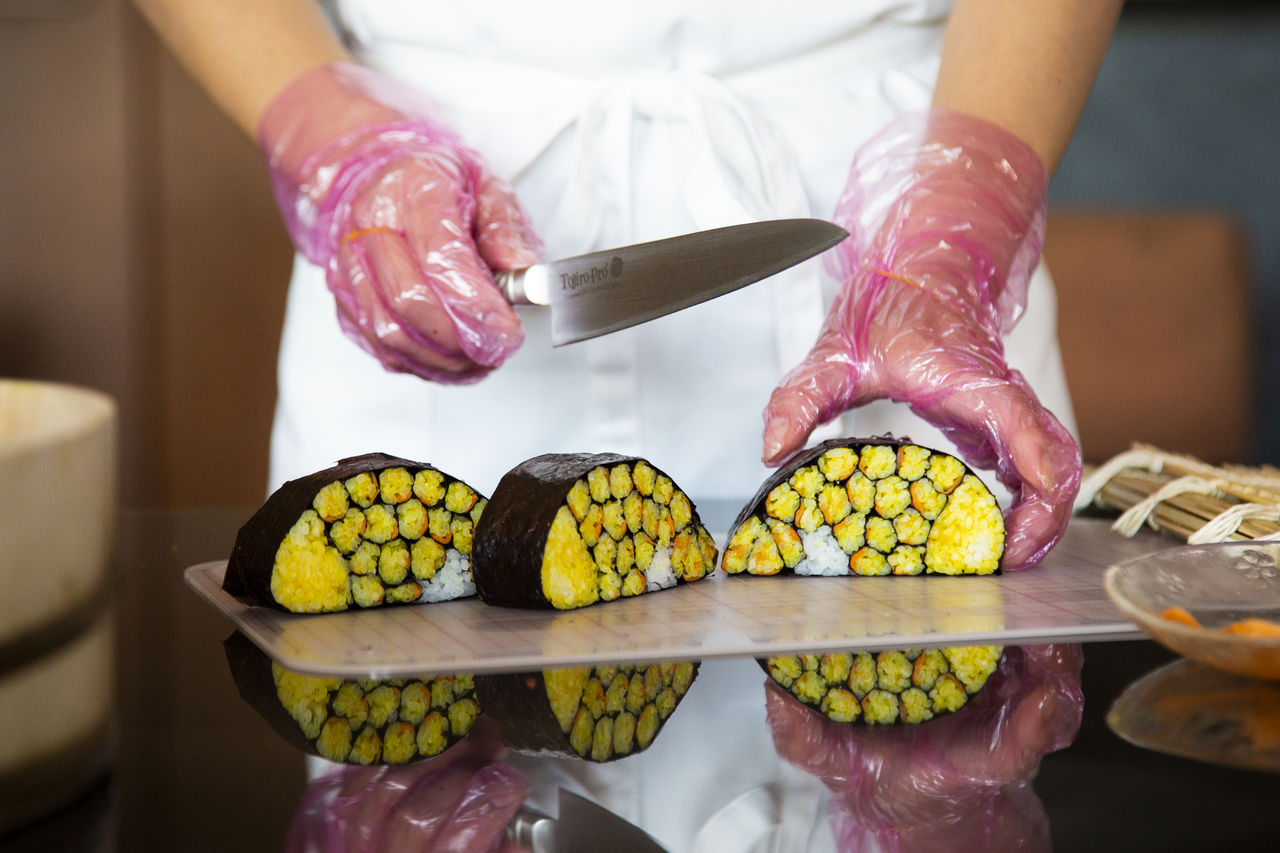 Cut the roll into cross-sections to reveal the bright yellow fish.
Cut the roll into cross-sections to reveal the bright yellow fish.
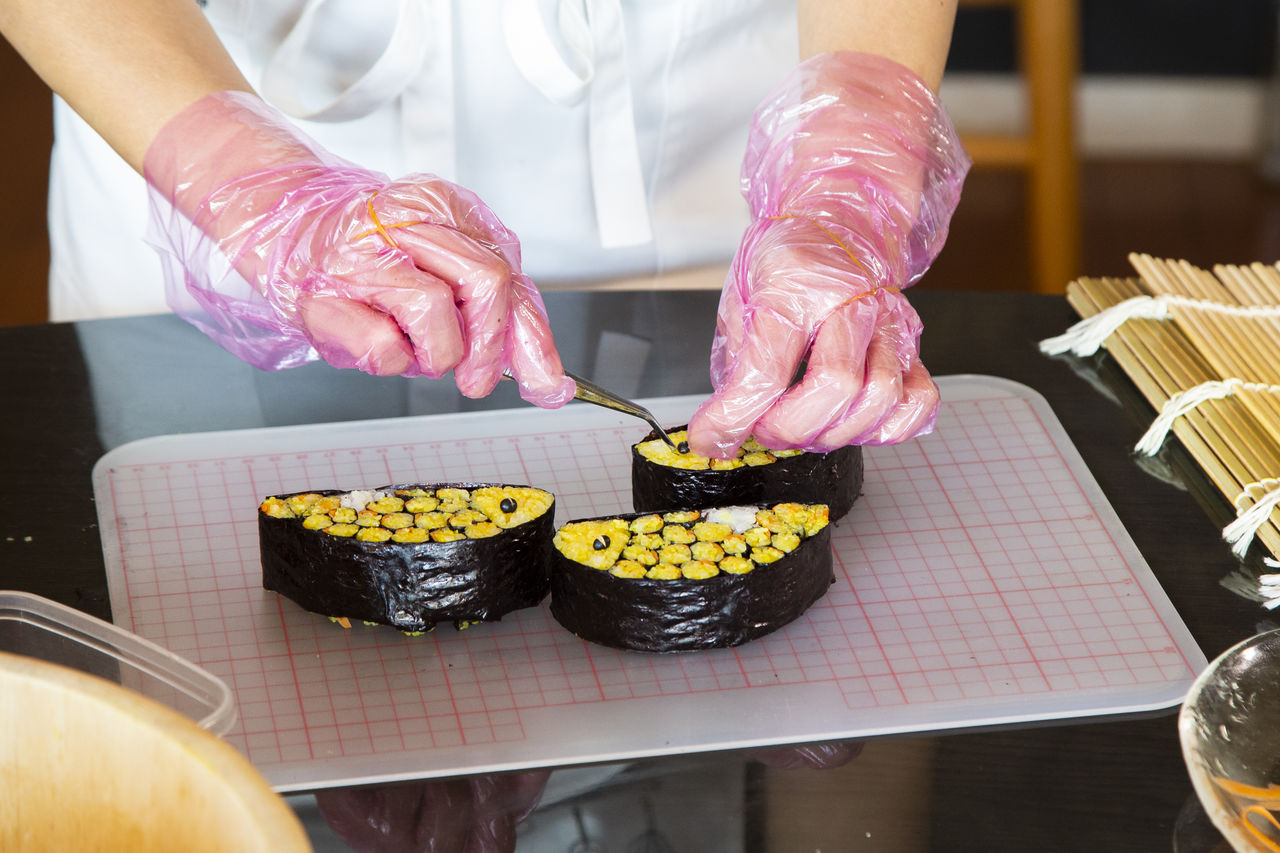 Bring the fish to life by adding black beans for the eyes.
Bring the fish to life by adding black beans for the eyes.
The small rolls of yellow rice also contain thin slices of carrot kneaded in salt to give them a sheen like the glitter of the scales on a live fish. The carrot also adds a pleasant, crunchy texture when the sushi is eaten.
All you need to make kazari makizushi is some imagination and a playful spirit. No need for expensive ingredients like tuna or ikura salmon roe. We suggest you raid your fridge and give it a try!
● Ingredients
- Nori (dried seaweed sheets), as needed
- Carrots thinly sliced and kneaded with salt
- Sushi rice colored yellow with turmeric
- Black soybeans (roasted kuro-sengoku soybeans are used here)
See the video for assembly instructions.
 The final product: Three delightful fish!
The final product: Three delightful fish!
(Originally published in Japanese on November 16, 2018. Photographs and text by Nippon.com. Video by Noguchi Kaori.)